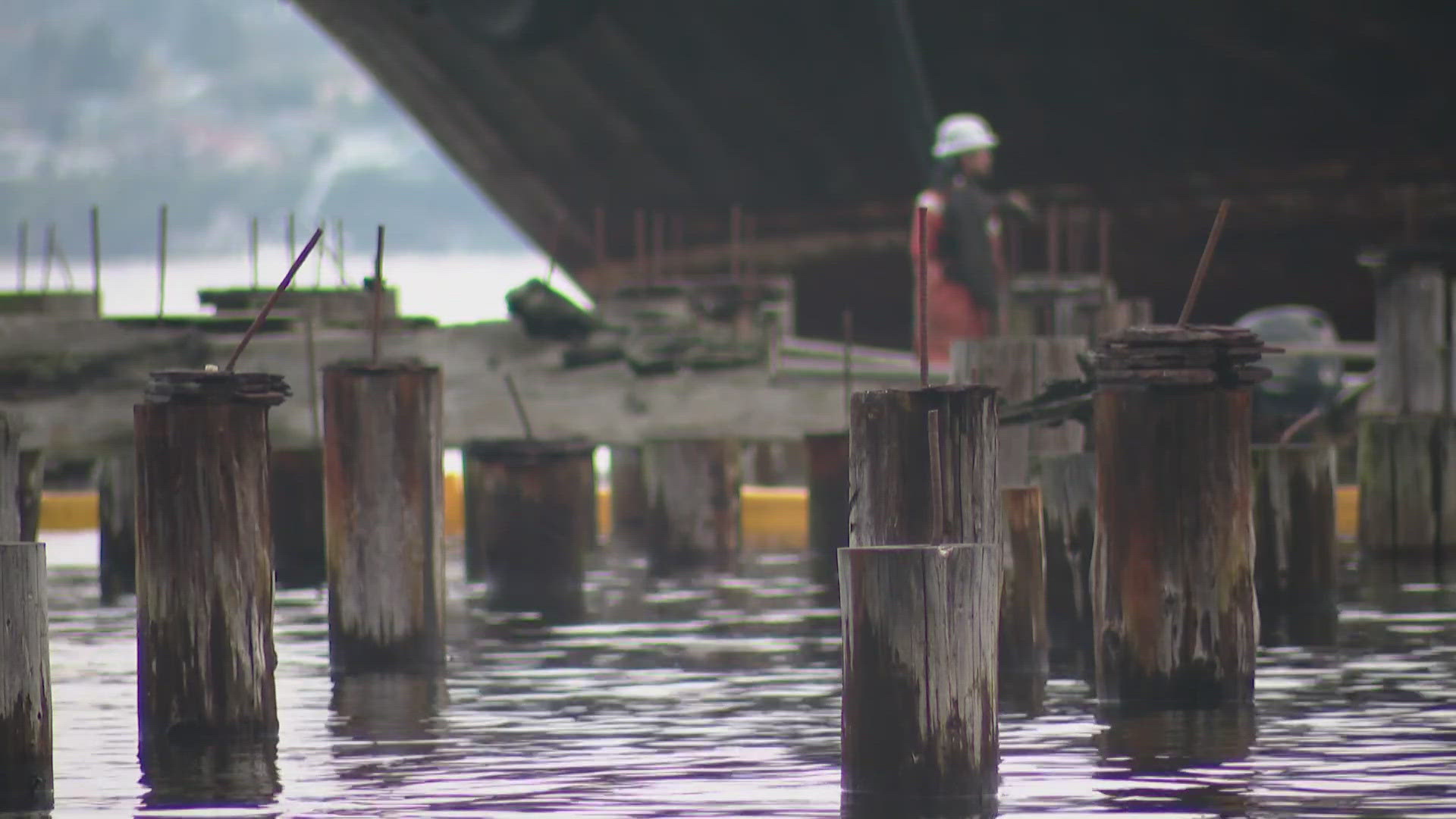TACOMA, Wash — The Ruston waterfront in Tacoma is seeing changes as approximately 1,200 creosote pilings are removed from the water to help restore the environment.
Toxic remnants of the old Dickman Mill are being pulled from the water. The lumber mill operated from the 1890’s until 1974. Work started last week to remove the pilings from the water and they should all be gone in about seven days.
“That'll definitely enhance the beauty of the water,” said Tacoma resident Paul Babare.
Creosote was used to treat wood to prevent decay. However, chemicals in the treated wood has been shown to be toxic to marine species and pose a threat to human health.
“The fact is, there's about 1,200 pilings behind us that hold more than history, they hold a lot of toxicity that is actually harming our salmon,” said Hilary Franz, the state lands commissioner. “It is harming our eelgrass, it's harming our waters.”
Franz said the pilings were coated with creosote; a mixture of toxic chemicals used to preserve wood. She said to restore the environment and help marine life, they need to be removed.
“What you’re seeing today is finally the investment by the Department of Natural Resources and by our state to actually clean up the waste we have left behind,” said Franz.
“It’s exciting for us any time we can take something out of the water that's killing fish, and this has been killing fish for 150 years,” said Chairman Bill Sterud with the Puyallup Tribe of Indians.
Sterud said he is looking forward to the area being restored closer to its natural state.
“The waterfront was taken from us and developed in a bad way,” said Sterud. “But that was the old days, this is the new days.”
Funding for this project was secured in the 2023 legislative session. The cost of this specific part of the project at the Dickman Mill site is about $3.5 million.
Martin colony relocated
A purple martin colony that's called Ruston Way home is being moved to a nearby estuary the creosote-treated pilings.
Boxes and gourds for the birds will be fixed and installed on new posts in a tidal estuary about 500 feet south from Dickman Mill Park.
Staff from Point Defiance Zoo & Aquarium and Northwest Trek Wildlife Park are working with Communities for a Healthy Bay to remove the houses and gourds.
“Purple martins are important and valued here in Tacoma and we are dedicated to monitoring and protecting them,” said Point Defiance Zoo Conservation Coordinator Zach Hawn. “They are a species that restores balance to our ecosystem, and we want to continue to provide that habitat that is essential for the success of these colorful, playful birds.”
Purple martins are North America's largest swallow. They can often be seen at Dickman Mill Park, Titlow Beach and Chambers Bay. Based on data from Point Defiance Zoo's community monitoring program, there are approximately 110 purple martins that nest in these areas. Another colony exists at Hylebos Waterway but has not been monitored recently.
Once the Department of Natural Resources finishes removing the creosote pilings from Dickman Mill Park, new posts, boxes and gourds will be installed in time for the martins' return in the spring.
The pilings are remnants of the Dickman Lumber Mill, which operated from the 1890s to 1974, according to the Department of Natural Resources. The pilings are one of the department's "Filthy Four" structures that need to be removed.

